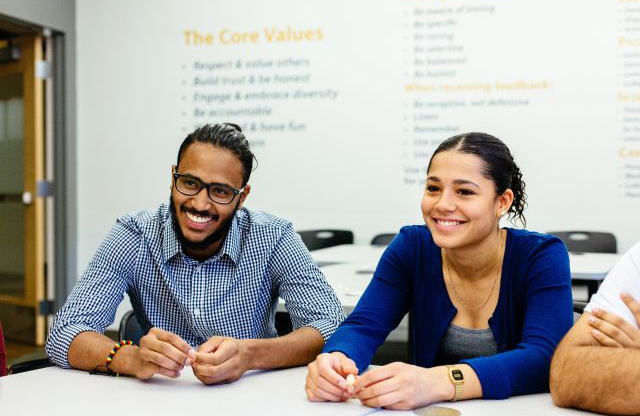“I was challenged, tested, and forced to break out of my shell. [At Year Up] I was learning and getting the experiences I had yearned for in high school. Year Up instilled in me the fact that I am capable of whatever I set my mind to. I learned how to lead, how to collaborate, and how to work in the best interest of not only myself but others as well. I am confident and comfortable opening up to others. And, importantly, I have found a place where I fit. I now know that I am limitless.”
-Stephen, Year Up graduate


“I was challenged, tested, and forced to break out of my shell. [At Year Up] I was learning and getting the experiences I had yearned for in high school. Year Up instilled in me the fact that I am capable of whatever I set my mind to. I learned how to lead, how to collaborate, and how to work in the best interest of not only myself but others as well. I am confident and comfortable opening up to others. And, importantly, I have found a place where I fit. I now know that I am limitless.”
-Stephen, Year Up graduate
What it does
Approximately five million young adults in the U.S. are neither employed nor in school. Year Up provides low- and moderate-income high school/GED graduates with six months of skills education, followed by six months of hands-on training at a corporate internship. Participants learn technical/career-specific skills (such as computer installation and IT networking), as well as professional/“soft-skills” (such as effective oral and written communication). Corporate partners host internships, often retaining students after graduation as employees.
Students sign a contract that they will attend the program regularly, be on time, and complete assignments. Based on their performance of the contract, they receive a weekly stipend. The program emphasizes support from peers, past graduates, staff, and volunteers, to help students resolve difficulties and maintain motivation. Year Up also partners with postsecondary education providers to house the program and provide technical training elements, allowing for faster, lower-cost scaling.
How effective is it
Year Up’s goals are to move students towards postsecondary education or employment and develop new talent pipelines for employers. In 2016, Year Up served nearly 3,000 students in 20 U.S. cities. Two-thirds were either employed or in school four months after completing the program with an average starting salary of $38,000 per year. A 2014 study found that over the first three years, the program boosts a young adult’s earnings by an average of 32%, or about $13,000 more than comparison youth who did not participate in Year Up.
Using Year Up’s program results, along with their per student implementation costs, CHIP estimates the cost for a student to successfully transition to postsecondary education or employment at approximately $42,300. Given the relatively high starting salary of Year Up alumni, they more than earn back the resources invested in them in less than two years after completing the program. Moreover, success breeds success: higher starting salaries tend to continue and compound, leading to higher earnings for the rest of their lives.
Donor dollars don’t need to cover all the costs since nearly half of the program’s expenses are covered by companies that sponsor internships—often as a source of entry-level, professional talent.
How you can help
Donations to the national organization help support ongoing monitoring and evaluation work as well as curriculum development, support to the growing alumni network, and the establishment of new program sites. You can support the Year Up program through its website, where you can also locate a program in your community, or find information on bringing Year Up to your community or becoming a corporate partner.
Personalize this project
Other evidence-based programs working with low income youth include YouthBuild, Youth Villages’ YVLifeSet Program, or the National Guard ChalleNGE programs. Service and Conservation Corps website provides a map of youth-targeted groups by state.
